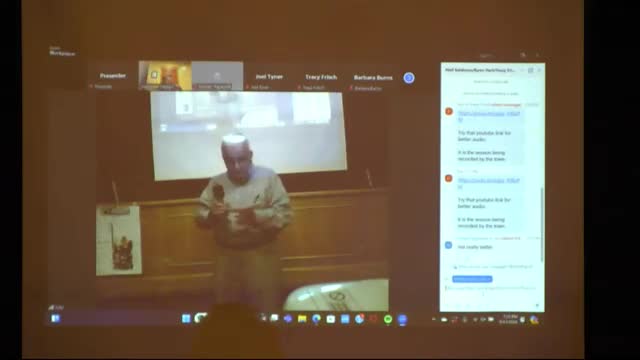Warren County revolutionizes recycling to save $200000 annually
September 13, 2024 | Clinton, Oneida County, New York
This article was created by AI summarizing key points discussed. AI makes mistakes, so for full details and context, please refer to the video of the full meeting. Please report any errors so we can fix them. Report an error »

In a recent government meeting, officials discussed significant changes to recycling practices in Warren County, New York, aimed at reducing costs and improving efficiency. The initiative, led by the advocacy group 0 Waste Warren County, has prompted a shift from a single-stream recycling system—where all recyclables are mixed together—to a dual-stream system that separates materials at the source. This change is expected to save the county approximately $200,000 annually.
Previously, the cost of recycling in Warren County was around $200 per ton, with $100 allocated for hauling and another $100 for processing. By reestablishing recycling at local landfills and aggregating materials for processing, the county anticipates that markets will pick up the sorted recyclables at no cost, potentially generating revenue from the sale of materials like cardboard, which currently fetches between $80 to $120 per ton.
The meeting also highlighted the growing trend of composting, which is being encouraged as a complementary initiative. Composting is seen as a vital step in managing organic waste, which constitutes about one-third of the waste stream. The discussion referenced the Marin County Compost Study, which demonstrated the benefits of composting for soil health and environmental sustainability.
Officials noted the historical context of recycling practices, emphasizing the shift in contamination levels associated with single-stream recycling. Contamination rates have decreased from 20-40% to around 10-15% due to increased public education, while dual-stream systems maintain a lower contamination rate of about 5%. This efficiency not only reduces costs but also enhances the viability of recycling programs.
The meeting underscored the economic implications of recycling and composting, particularly in light of past challenges faced by the industry, including changes in international recycling policies that have affected U.S. practices. As the county moves forward with these initiatives, it aims to foster a more sustainable waste management system that benefits both the environment and the local economy.
Previously, the cost of recycling in Warren County was around $200 per ton, with $100 allocated for hauling and another $100 for processing. By reestablishing recycling at local landfills and aggregating materials for processing, the county anticipates that markets will pick up the sorted recyclables at no cost, potentially generating revenue from the sale of materials like cardboard, which currently fetches between $80 to $120 per ton.
The meeting also highlighted the growing trend of composting, which is being encouraged as a complementary initiative. Composting is seen as a vital step in managing organic waste, which constitutes about one-third of the waste stream. The discussion referenced the Marin County Compost Study, which demonstrated the benefits of composting for soil health and environmental sustainability.
Officials noted the historical context of recycling practices, emphasizing the shift in contamination levels associated with single-stream recycling. Contamination rates have decreased from 20-40% to around 10-15% due to increased public education, while dual-stream systems maintain a lower contamination rate of about 5%. This efficiency not only reduces costs but also enhances the viability of recycling programs.
The meeting underscored the economic implications of recycling and composting, particularly in light of past challenges faced by the industry, including changes in international recycling policies that have affected U.S. practices. As the county moves forward with these initiatives, it aims to foster a more sustainable waste management system that benefits both the environment and the local economy.
View full meeting
This article is based on a recent meeting—watch the full video and explore the complete transcript for deeper insights into the discussion.
View full meeting
